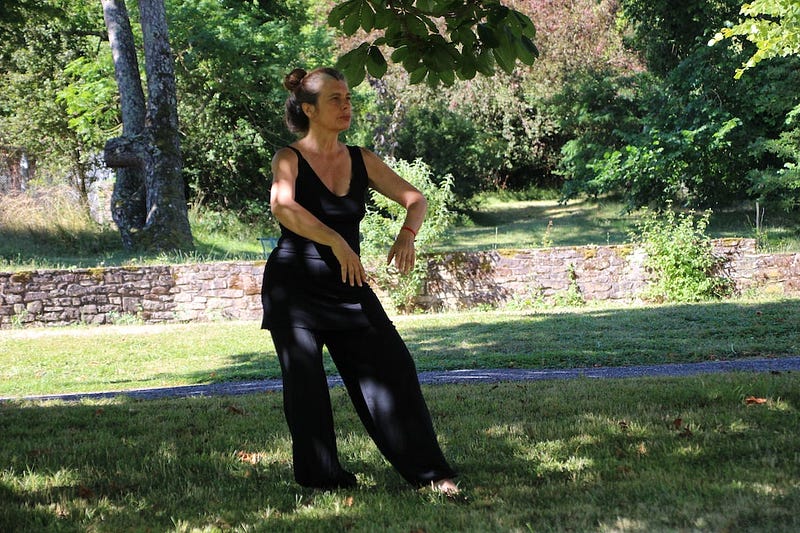Exploring Tai Chi's Impact on Parkinson's Disease: A Critical Look
Written on
Chapter 1: Understanding the Buzz Around Tai Chi
In contemporary society, we often find ourselves captivated by health-related news stories. Weekly, we encounter various claims, from the life-saving benefits of coffee to the widely promoted notion that blueberries are exceptional for heart health. Recently, the spotlight has turned to Tai Chi—a gentle Chinese martial art favored by older adults—with assertions that it may help manage Parkinson's disease. As someone who has lost a relative to this condition, I approached these headlines with keen interest. If Tai Chi could genuinely be the key to better living with an incurable disease, it would be remarkable.
Many reports indicate that individuals with Parkinson's may delay the need for medication for years through regular Tai Chi practice.

However, the scientific basis for these assertions is not robust. While physical activity is essential for those with Parkinson's, current evidence does not support that Tai Chi is more beneficial than simple walking.
Section 1.1: The Research Study Behind the Claims
The excitement stems from a newly published study in a branch of the British Medical Journal titled “Effect of long-term Tai Chi training on Parkinson’s disease: a 3.5-year follow-up cohort study.” Many news articles claim this extensive research tracked individuals with Parkinson’s over five years, comparing those who practiced Tai Chi with a control group that did not engage in the martial art.
At the conclusion of the study, it appeared that participants who practiced Tai Chi experienced fewer Parkinson's-related issues than those who did not. Specifically, the Tai Chi group showed a slower progression of symptoms and used slightly fewer medications, which sounds promising!

Nevertheless, the actual description of the study is misleading. The reports distort the facts, as this research primarily involved retrospective analysis of a database from individuals who had previously accessed Tai Chi services. The authors operated a clinic from 2016 to 2019 and followed up with patients from 2020 to 2021 to assess their Parkinson’s progression. They then identified a control group of individuals who engaged in minimal or no exercise and compared the two groups' disease progression.
Section 1.2: Limitations of the Study Design
There are numerous concerns regarding this study's design. For instance, participants were only included in the Tai Chi group if they had attended at least 75% of their sessions, while individuals in the control group were excluded if they exercised over 50 minutes weekly. Thus, the study did not genuinely compare Tai Chi practice to a control; rather, it compared frequent Tai Chi attendees to individuals who hardly exercised at all.
The retrospective aspect of this study complicates the interpretation of its findings. The methodology for selecting the control group lacks clarity. Although the authors employed a matching technique to ensure some similarity in metrics, the absence of detailed information about the control group raises questions regarding the validity of the comparisons.
Additionally, the primary outcome measure focused on whether participants required additional Parkinson's medication. In 2019, a slight benefit was noted for the Tai Chi group; however, by 2021, both groups had increased their medication dosages. While the Tai Chi group reported better scores on questionnaires assessing Parkinson's symptoms, it is evident they were in a more favorable position at the study's onset.
Chapter 2: Drawing Conclusions from the Evidence
The fundamental issue with this study is that it fails to yield any meaningful conclusions from a comparison of highly active individuals versus those who are largely sedentary. It is expected that individuals who do minimal exercise will inherently be worse off than those who engage in significant physical activity.
Moreover, existing research confirms that physical exercise plays a crucial role in managing Parkinson's disease. A comprehensive Cochrane review from 2023, which included numerous studies, demonstrated the benefits of exercise for individuals with Parkinson's, indicating little difference between exercise types.

In summary, while Tai Chi likely contributes positively to managing Parkinson's, so too does virtually any form of exercise. Activities such as walking, swimming, weight training, or running can all assist in mitigating disease progression, depending on the individual's stage. The most compelling evidence suggests that physical activity is advantageous for Parkinson's disease, regardless of the specific type. If Tai Chi resonates with you, pursue it; if you prefer gardening, that might be equally beneficial. The key is to stay active and maintain as much movement as possible.
This video explores how Tai Chi can be beneficial for people with Parkinson's Disease, emphasizing gentle movements and balance.
Discover the role of Tai Chi in treating Parkinson's Disease, featuring expert insights and practical demonstrations.